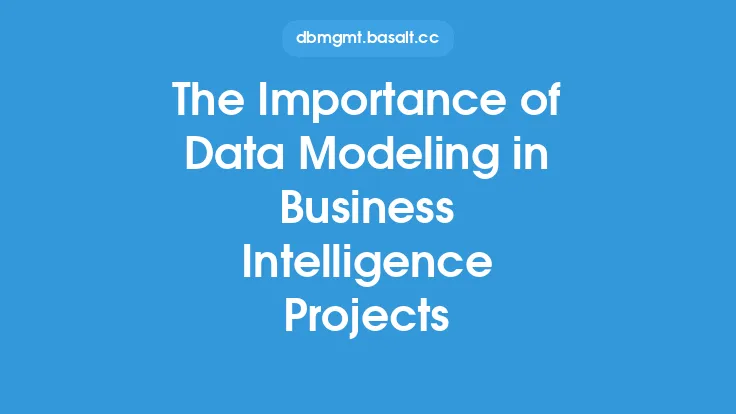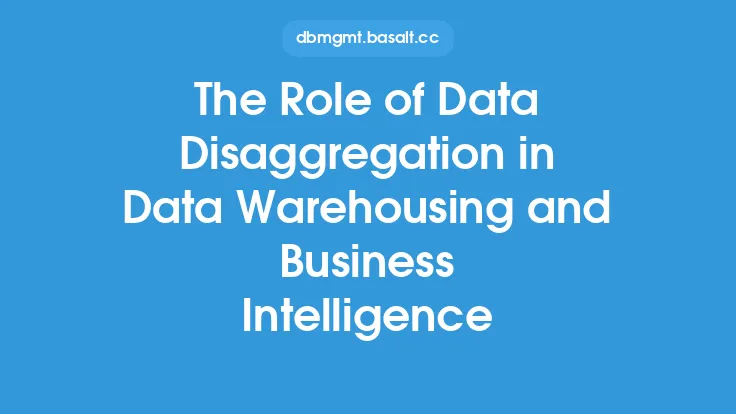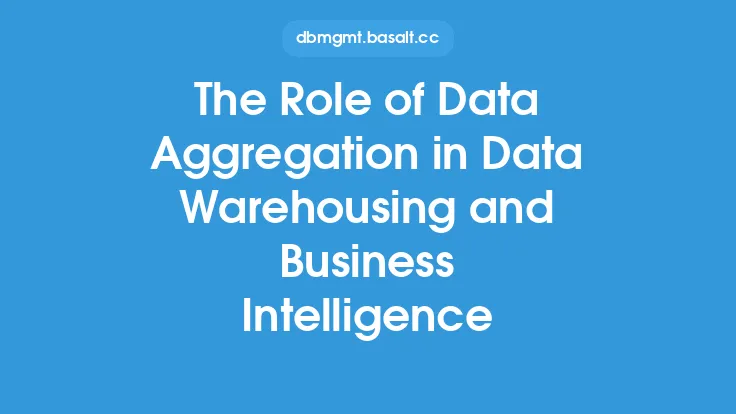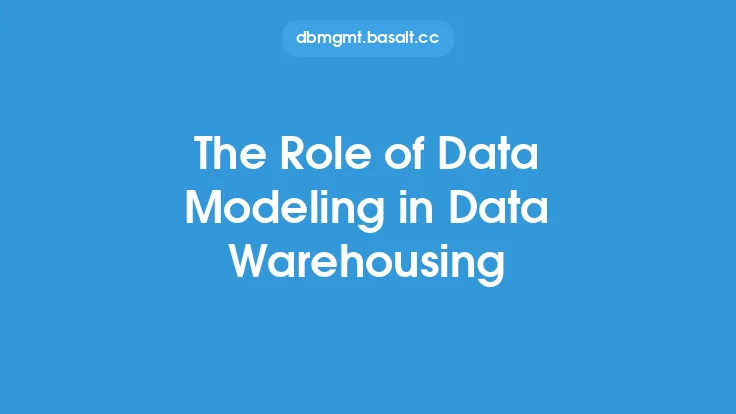In today's fast-paced business environment, organizations are constantly seeking ways to gain a competitive edge and make informed decisions. One crucial aspect of achieving this goal is the effective use of data. Data modeling plays a vital role in business intelligence (BI) solutions, enabling companies to extract insights from their data and drive business growth. At its core, data modeling involves creating a conceptual representation of an organization's data assets, which can be used to support business decision-making.
Introduction to Data Modeling
Data modeling is a process that involves creating a visual representation of an organization's data, including entities, attributes, and relationships. This representation is used to communicate the structure and meaning of the data to stakeholders, ensuring that everyone has a common understanding of the data and its usage. In the context of business intelligence, data modeling is used to design and implement databases, data warehouses, and data marts that support reporting, analysis, and decision-making.
The Role of Data Modeling in Business Intelligence
Data modeling is essential in business intelligence solutions because it provides a framework for organizing and structuring data in a way that supports analysis and decision-making. A well-designed data model enables organizations to integrate data from multiple sources, ensure data consistency, and provide a single version of the truth. This, in turn, enables business users to access accurate and reliable data, perform analysis, and make informed decisions. Data modeling also helps to identify data gaps and inconsistencies, which can be addressed through data governance and data quality initiatives.
Data Modeling Techniques
There are several data modeling techniques used in business intelligence, including entity-relationship modeling, dimensional modeling, and object-relational modeling. Entity-relationship modeling is a traditional approach that involves identifying entities, attributes, and relationships. Dimensional modeling, on the other hand, is a technique specifically designed for data warehousing and business intelligence, which involves organizing data into facts and dimensions. Object-relational modeling is a technique that combines the benefits of entity-relationship modeling and object-oriented modeling.
Data Modeling Tools and Technologies
There are several data modeling tools and technologies available, including data modeling software, data integration tools, and database management systems. Data modeling software, such as ER/Studio and PowerDesigner, provides a graphical interface for creating and managing data models. Data integration tools, such as Informatica and Talend, enable organizations to integrate data from multiple sources and create a unified view of the data. Database management systems, such as Oracle and Microsoft SQL Server, provide a platform for implementing and managing databases and data warehouses.
Best Practices for Data Modeling
To ensure the success of data modeling initiatives, organizations should follow best practices, such as involving stakeholders in the data modeling process, using a standardized data modeling notation, and ensuring data model consistency. It is also essential to consider data governance and data quality when designing and implementing data models. Additionally, organizations should continuously monitor and refine their data models to ensure they remain relevant and effective in supporting business decision-making.
Data Modeling and Data Governance
Data modeling and data governance are closely related, as data governance provides a framework for managing and ensuring the quality of an organization's data assets. Data governance involves establishing policies, procedures, and standards for data management, including data modeling, data quality, and data security. A well-designed data model can help support data governance initiatives by providing a clear understanding of the data and its usage. Conversely, data governance can help ensure that data models are accurate, consistent, and aligned with business requirements.
The Future of Data Modeling
The future of data modeling is closely tied to the evolution of business intelligence and data analytics. As organizations increasingly adopt big data, cloud computing, and artificial intelligence, data modeling will need to adapt to these new technologies and trends. Additionally, the growing importance of data governance and data quality will require data modeling to become more integrated with these initiatives. To remain relevant, data modeling will need to become more agile, flexible, and responsive to changing business requirements.
Conclusion
In conclusion, data modeling plays a critical role in business intelligence solutions, enabling organizations to extract insights from their data and drive business growth. By understanding the principles and techniques of data modeling, organizations can create a solid foundation for their business intelligence initiatives. As the business environment continues to evolve, data modeling will need to adapt to new technologies and trends, ensuring that it remains a vital component of business intelligence solutions. By following best practices and staying up-to-date with the latest developments, organizations can unlock the full potential of their data and achieve greater success in their business intelligence initiatives.





